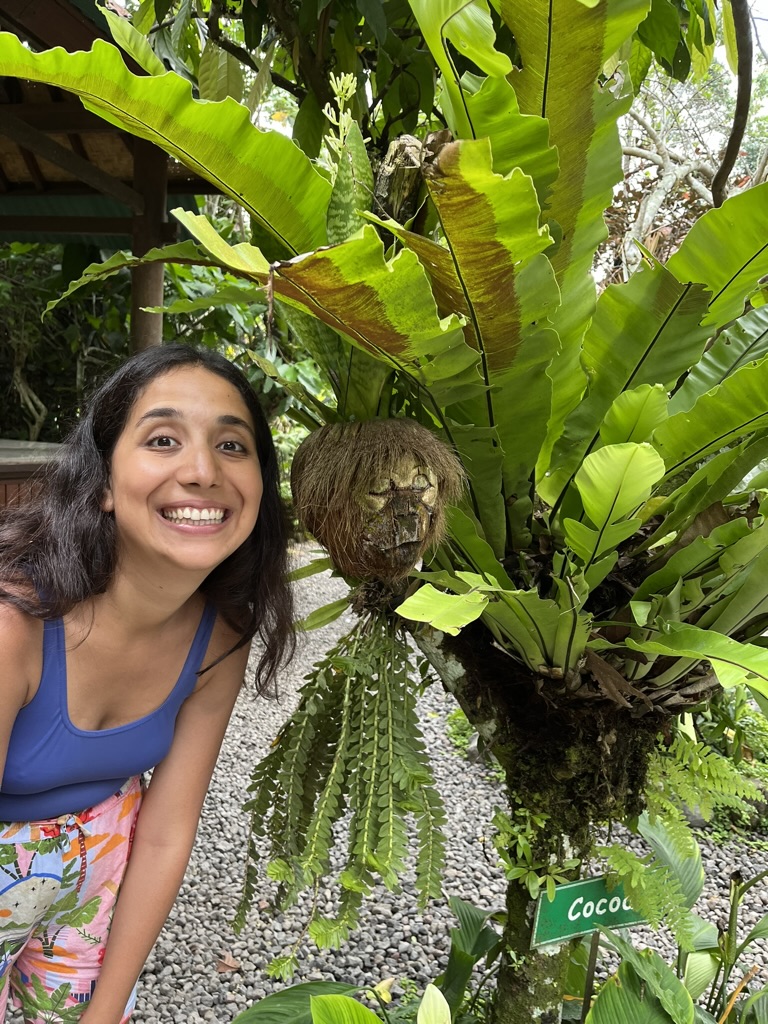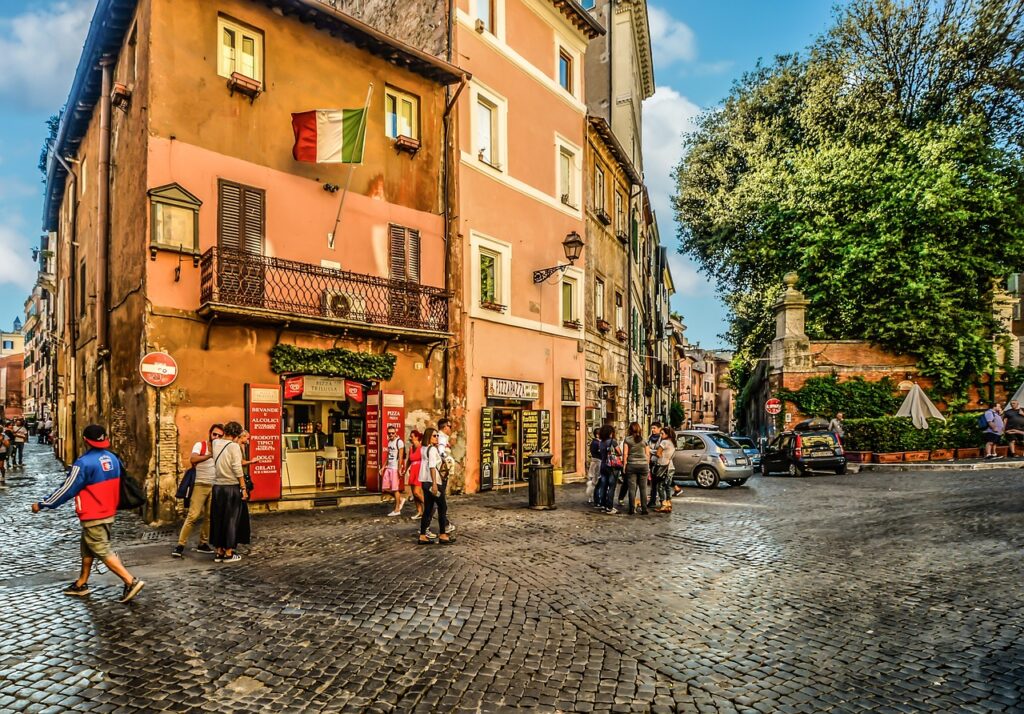Discover the Magic of Bali: A Solo Female Traveler’s Guide
Bali, Indonesia, is a tropical paradise that offers a perfect blend of culture, adventure, and relaxation. As a solo female traveler, exploring Bali can be an enriching and safe experience. This guide will take you through the best destinations, activities, and culinary delights Bali has to offer, along with practical travel tips.
- Discover the Magic of Bali: A Solo Female Traveler’s Guide
Getting to Bali and Around
Bali is accessible via Ngurah Rai International Airport (DPS) in Denpasar. From there, you can hire a taxi, use ride-sharing apps, or rent a scooter to explore the island. For solo female travelers, using reputable taxi services and ride-sharing apps is advisable for safety and convenience. The most famous taxi application is Grab which offers the cheapest rides. Do not trust the taxi drivers at the airport as they charge at least 3 times more than Grab.

Top Places to Visit in Bali
Tegallalang Rice Terrace
The Tegallalang Rice Terrace is a must-visit for its stunning landscapes and intricate irrigation system known as subak, a traditional Balinese cooperative irrigation system. This iconic spot is perfect for a morning stroll or a picturesque photo session.
Ubud Swing vs. Bali Swing: Which One to Choose?
When it comes to choosing between the Ubud Swing and the Bali Swing, it can be a tough decision as both offer unique experiences. Here’s a detailed comparison to help you decide which one suits your preferences best:
Ubud Swing
Location and Accessibility: The Ubud Swing is located in the heart of Ubud, a region known for its lush greenery, serene rice terraces, and cultural attractions. Getting to Ubud is relatively easy with plenty of transportation options available, including taxis, scooters, and private drivers.
Scenic Beauty: Ubud Swing offers a more tranquil and less commercialized experience compared to the Bali Swing. The swings are set amidst the beautiful rice terraces and dense jungle, providing a serene backdrop that’s perfect for those looking for a peaceful escape. The Tegallalang Rice Terrace, one of the most iconic spots in Ubud, is nearby, making it a great addition to your visit.
Crowd and Atmosphere: Ubud Swing tends to attract fewer tourists, making it ideal for those who prefer a quieter experience. The atmosphere is more relaxed, allowing you to fully immerse yourself in the natural beauty of the surroundings.
Photography: For photography enthusiasts, the Ubud Swing offers stunning opportunities to capture the essence of Bali’s natural beauty. The swings are strategically placed to give you the best angles of the jungle and rice fields.
Additional Attractions: Ubud is a cultural hub with plenty of attractions such as the Ubud Monkey Forest, Ubud Palace, and numerous art galleries and markets. After your swing experience, you can explore these cultural landmarks and enjoy the rich heritage of the area.
Bali Swing
Location and Accessibility: The Bali Swing is located in Bongkasa, near Ubud, and is easily accessible via taxis or scooters. It’s a popular destination, and you can often find guided tours that include transportation to and from the site.
Scenic Beauty: The Bali Swing is set in a picturesque location with a stunning view of the Ayung River, jungle, and waterfalls. The setup is designed to offer breathtaking views and dramatic backdrops for photos.
Crowd and Atmosphere: Due to its popularity, the Bali Swing tends to attract more tourists, resulting in a busier atmosphere. If you enjoy a lively setting and meeting fellow travelers, the Bali Swing might be more appealing.
Photography: The Bali Swing is known for its elaborate setup with multiple swings and nests designed specifically for photography. The higher swings offer a thrilling experience and a unique perspective of the landscape.
Additional Attractions: In addition to the swings, the Bali Swing park features other attractions like the famous bird’s nests, helicopter swings, and various viewpoints. These additional features make it a comprehensive adventure park for those looking to spend more time and explore different activities.
Which One to Choose?
- For a tranquil and cultural experience: Choose the Ubud Swing. Its serene setting and proximity to cultural landmarks make it ideal for those seeking a peaceful escape and a deeper connection with Balinese culture.
- For a thrilling and photogenic adventure: Choose the Bali Swing. Its dramatic views, multiple swing options, and additional attractions provide an adrenaline-pumping experience perfect for capturing memorable photos.
Ultimately, both swings offer a unique way to experience Bali’s natural beauty, and visiting either one will add an exciting highlight to your Bali itinerary.
Uluwatu Temple Bali
Perched on a cliff, Uluwatu Temple is a magnificent sea temple dedicated to the spirits of the sea. It’s famous for its stunning sunset views and the traditional Kecak dance performance held every evening.
Bali Waterfalls
Bali is home to numerous breathtaking waterfalls, such as Tegenungan, Gitgit, and Sekumpul. These natural wonders offer refreshing dips and scenic hikes.
Activities and Adventures
The Coffee Experience in Bali: A Journey of Flavors
Bali’s coffee culture is a vibrant blend of traditional methods and innovative approaches, offering coffee enthusiasts a unique and rich experience. The island’s lush landscapes and favorable climate create the perfect conditions for coffee cultivation, particularly in regions like Kintamani, known for its volcanic soil and high altitudes. Among the many coffee varieties found in Bali, Luwak coffee stands out as a must-try for any visitor.
The Charm of Balinese Coffee Plantations
Kintamani Coffee: The highland region of Kintamani is famous for its Arabica coffee, known for its citrusy and fruity flavor profile, influenced by the volcanic soil. Visiting a coffee plantation here offers a chance to see the traditional coffee-making process, from bean to cup. You can also enjoy guided tours that include coffee tastings, providing a deeper understanding of the cultivation and roasting techniques.
Bali Coffee Plantation Tours: Numerous coffee plantations across Bali, such as Bali Pulina and Teba Sari, offer immersive tours. These tours typically include walks through the lush coffee fields, demonstrations of the traditional roasting process, and tastings of various coffee types, including the island’s famous Luwak coffee. Visitors can learn about the different stages of coffee production and enjoy breathtaking views of the surrounding landscapes.
Luwak Coffee: The Exotic Brew
What is Luwak Coffee? Luwak coffee, or Kopi Luwak, is one of the most unique and expensive coffees in the world. It is made using beans that have been eaten and excreted by the Asian palm civet, a small mammal native to the region. The beans undergo fermentation in the civet’s digestive tract, which is believed to enhance the flavor by removing some of the acidity and bitterness, resulting in a smoother, richer taste.

The Process: The production of Luwak coffee involves several meticulous steps:
- Collection: Farmers collect the beans from the droppings of civets.
- Cleaning: The beans are thoroughly cleaned to remove any impurities.
- Roasting: The cleaned beans are then roasted to perfection, often using traditional methods to preserve their unique flavor profile.
- Brewing: Finally, the beans are ground and brewed, offering a cup of coffee that is rich, smooth, and often described as having a complex, earthy flavor with hints of chocolate and caramel.
Tasting Experience: Tasting Luwak coffee is an experience in itself. Many coffee plantations and cafes across Bali offer Luwak coffee tastings, allowing visitors to savor its distinct flavor. The tasting sessions often include comparisons with other local coffee varieties, enhancing the appreciation of the unique qualities of Luwak coffee.
Ethical Considerations: It’s important to choose plantations that produce Luwak coffee ethically, ensuring the well-being of the civets. Ethical producers allow civets to live in their natural habitat and do not confine them in cages. Visitors should look for certifications or ask about the farm’s practices to ensure they support humane and sustainable production methods.
Popular Coffee Shops in Bali
Coffee Shops in Ubud: Ubud, known for its artistic and laid-back atmosphere, has a thriving coffee scene. Coffee shops like Seniman Coffee Studio and Anomali Coffee are popular spots where visitors can enjoy a perfect cup of Balinese coffee in a cozy setting.
Cafes in Seminyak and Canggu: Seminyak and Canggu are home to numerous trendy cafes such as Revolver Espresso and Hungry Bird Coffee Roasters, offering a variety of coffee drinks, from classic espresso to innovative coffee concoctions. These cafes often feature locally sourced beans, providing an authentic taste of Bali’s coffee.
Bali Kite Festival: A Colorful Celebration of Balinese Culture
The Bali Kite Festival is an annual event that transforms the skies over Bali into a vivid display of traditional and innovative kites. Held during the windy season in July, this festival is not only a visual feast but also a cultural celebration that draws participants and spectators from around the world.
History and Cultural Significance
The Bali Kite Festival has its roots in the island’s agrarian culture. Traditionally, Balinese farmers used kites as a way to communicate with the gods, praying for abundant harvests and good weather. The festival, which started as a local tradition, has grown into an internationally recognized event that showcases Bali’s rich cultural heritage.
Event Highlights
Traditional Kites: The festival features various traditional Balinese kites, including the Bebean (fish-shaped kite), Janggan (bird-shaped kite with a long tail), and Pecukan (leaf-shaped kite). Each kite type holds specific cultural meanings and is crafted with intricate designs and vibrant colors.
Modern and Innovative Kites: In addition to traditional kites, the festival also highlights modern and innovative kite designs. Participants from around the world bring their unique creations, ranging from enormous structures to creatively shaped kites, adding a contemporary twist to the event.
Competitions: The festival includes various competitions where teams compete in categories such as the best traditional kite, the best new creation, and the best overall performance. Teams are judged on the beauty, craftsmanship, and ability to keep the kites aloft. The competitive spirit adds excitement and a sense of camaraderie among participants.
Music and Dance: Traditional Balinese music and dance performances accompany the festival, providing a rich cultural backdrop. The sounds of the gamelan orchestra and the graceful movements of Balinese dancers enhance the festive atmosphere, creating an immersive cultural experience.
Community Involvement: The festival is a significant community event, with local villages actively participating in kite-making and flying. It’s an excellent opportunity for visitors to engage with the local community, learn about traditional kite-making techniques, and understand the cultural significance behind each design.
How to Get There
The Bali Kite Festival is typically held at Padang Galak Beach in Sanur, which is about a 30-minute drive from Denpasar. You can reach the festival site by taxi, scooter, or a private driver. It’s advisable to arrive early to secure a good viewing spot and to witness the kites being prepared and launched.
Tips for Visitors
- Stay Hydrated and Protected: The festival takes place outdoors, so bring plenty of water, wear sunscreen, and bring a hat or umbrella to protect yourself from the sun.
- Bring a Camera: The vibrant kites and cultural performances offer fantastic photo opportunities. Make sure to capture the colorful spectacle and the joyous atmosphere.
- Engage with Locals: Don’t hesitate to interact with the locals and kite makers. They often share interesting stories and insights about the cultural significance of their kites.
- Explore Sanur: After enjoying the festival, take some time to explore Sanur’s beaches, cafes, and markets. Sanur offers a more relaxed and laid-back vibe compared to the busier areas of Bali.
Culinary Delights
Bali Vegetarian Restaurants and Vegan Food
Bali is a haven for vegetarians and vegans. Some top spots include Earth Café in Seminyak, Clear Café in Ubud, and The Shady Shack in Canggu. These places offer delicious and diverse plant-based dishes.
Bali Flower Bath: A Luxurious Tradition of Relaxation
The Bali Flower Bath is a luxurious and rejuvenating tradition that has become a must-try experience for visitors to the island. This unique spa treatment involves soaking in a bathtub filled with fresh, fragrant flowers, creating a visually stunning and deeply relaxing experience.
Origins and Cultural Significance
The practice of flower baths in Bali is rooted in the island’s ancient healing and wellness traditions. Balinese culture places a strong emphasis on the harmony between the mind, body, and spirit, and flower baths are believed to promote this balance. The use of flowers in rituals and ceremonies is common in Bali, symbolizing purity, beauty, and the connection to nature.
What to Expect from a Bali Flower Bath
Setting: Flower baths are typically offered in high-end spas and wellness centers across Bali, often set in serene and scenic locations. Imagine being surrounded by lush greenery, gentle water features, and the tranquil sounds of nature while you relax in your flower-filled bath.
Flowers Used: A variety of vibrant and aromatic flowers are used in Bali flower baths, including frangipani, jasmine, roses, and marigolds. Each flower not only contributes to the bath’s visual appeal but also adds its unique fragrance and potential therapeutic properties.
Benefits: A Bali flower bath is not only visually and olfactorily delightful but also offers several health benefits:
- Relaxation and Stress Relief: The warm water and the soothing scents of the flowers help to relax the muscles and calm the mind, reducing stress and anxiety.
- Skin Nourishment: The natural oils and essences from the flowers can nourish and hydrate the skin, leaving it soft and glowing.
- Mind-Body Connection: The sensory experience of a flower bath promotes mindfulness and a deeper connection to the present moment, enhancing overall well-being.
Top Spas Offering Flower Baths
Karsa Spa, Ubud: Karsa Spa in Ubud is renowned for its luxurious flower baths, set in private rooms with views of the surrounding rice fields. The spa uses locally sourced flowers and offers a range of treatments to complement the bath.
Fivelements Retreat, Ubud: This eco-luxury wellness retreat offers a holistic experience that includes flower baths as part of their healing rituals. The baths are often combined with massages, aromatherapy, and meditation sessions.
Tjampuhan Spa, Ubud: Located in the sacred valley of Ubud, Tjampuhan Spa provides flower baths in a natural cave-like setting.
How to Prepare for a Flower Bath
- Stay Hydrated: Drink plenty of water before and after your bath to stay hydrated.
- Avoid Heavy Meals: Opt for light meals before your spa session to enhance relaxation.
- Arrive Early: Arrive a little early to enjoy the spa facilities in a calm state of mind.
- Communicate Preferences: Inform the spa staff of any allergies or preferences regarding the flowers and treatments.
Tips for Enjoying a Flower Bath
- Immerse Fully: Allow yourself to fully relax and immerse in the experience. Close your eyes, breathe deeply, and enjoy the scents and sensations.
- Extend the Experience: Complement the flower bath with additional treatments like massages or facials for a complete wellness experience.
- Capture the Moment: Don’t forget to take a few photos to remember this unique and beautiful experience.
Nightlife in Bali: Unleashing the Party Spirit
Bali’s nightlife is as diverse and vibrant as the island itself, offering something for every kind of night owl. From bustling beach clubs and sophisticated rooftop bars to laid-back lounges and energetic nightclubs, Bali comes alive after sunset. Among the hotspots, Kuta stands out as the epicenter of Bali’s nightlife, drawing in crowds with its lively atmosphere and wide range of entertainment options.
Nightlife in Kuta: The Heart of Bali’s Party Scene
Kuta is the go-to destination for party enthusiasts seeking a dynamic and exhilarating nightlife experience. Here’s a closer look at what makes Kuta the nightlife capital of Bali:
Beachfront Bars and Sunset Spots: Kuta Beach is renowned for its stunning sunsets, and the beachfront bars are the perfect places to enjoy them. Venues like The Beachwalk Mall offer a mix of shopping, dining, and entertainment, while bars like Azul Beach Club provide a relaxed setting to enjoy a cocktail as the sun dips below the horizon.
Lively Nightclubs: Kuta’s nightclubs are legendary, attracting international DJs and partygoers from around the globe. Sky Garden Bali is one of the most famous clubs, featuring multiple floors of music, from EDM and hip-hop to house and techno. With its rooftop garden and all-you-can-eat buffets, Sky Garden offers a comprehensive nightlife experience.
Pubs and Live Music Venues: For a more laid-back vibe, Kuta has numerous pubs and live music venues. Gracie Kelly’s Irish Pub offers a taste of Ireland with its authentic decor and live band performances, while Hard Rock Café Bali features rock ‘n’ roll memorabilia and regular live music acts.
Themed Parties and Events: Kuta hosts a variety of themed parties and events throughout the year. From full moon parties on the beach to seasonal celebrations and international DJ performances, there’s always something happening to keep the party spirit alive.
Rooftop Bars: For those looking to enjoy the nightlife with a view, Kuta’s rooftop bars provide a sophisticated atmosphere. Double-Six Rooftop and Velvet & Hypnotized offer panoramic views of the ocean and the city, along with signature cocktails and stylish lounges.
Other Nightlife Hotspots in Bali
While Kuta is the nightlife hub, other areas in Bali also offer exciting after-dark experiences:
Seminyak: Seminyak’s nightlife is chic and upscale, with beach clubs like Potato Head and Ku De Ta leading the scene. These venues offer a blend of music, gourmet dining, and a relaxed beachfront vibe. For late-night dancing, La Favela is a unique bar and nightclub with eclectic decor and a lively dance floor.
Canggu: Canggu is known for its laid-back and bohemian vibe, attracting a younger crowd. The Old Man’s Bar is a popular spot for casual drinks and socializing. Finns Beach Club provides a more energetic atmosphere with DJs and pool parties.
Ubud: Ubud’s nightlife is more subdued but offers a unique experience with cultural performances and live music. Jazz Café Ubud provide a cozy setting to enjoy live jazz and blues. CP Lounge offers a mix of music, dance, and a laid-back garden atmosphere.
Safety Tips for Enjoying Bali’s Nightlife
As with any nightlife destination, it’s important to stay safe while enjoying Bali’s vibrant scene. Here are some tips:
- Stay Together: If you’re traveling in a group, stick together, especially when moving from one venue to another.
- Watch Your Drinks: Never leave your drink unattended and be cautious of accepting drinks from strangers.
- Plan Your Transport: Ensure you have a reliable way to get back to your accommodation. Use reputable taxi services or ride-sharing apps like Grab.
- Stay Hydrated: Bali’s tropical climate and active nightlife can lead to dehydration, so drink plenty of water throughout the night.
- Know Your Limits: Enjoy the nightlife responsibly and know your alcohol limits to ensure a fun and safe experience.
Recommended: Exploring Nusa Penida: A Solo Female Traveler’s Guide to Crystal Bay
Discovering the Top Spas in Bali
Bali is renowned for its luxurious spas, offering a perfect blend of traditional Balinese healing techniques and modern wellness practices. Here are some of the top spas in Bali that promise an unforgettable relaxation experience:
- COMO Shambhala Estate, Ubud: Known for its holistic approach to wellness, this estate offers yoga, meditation, and bespoke spa treatments in a serene, natural setting.
- Fivelements Retreat, Ubud: Emphasizing eco-luxury, this retreat offers a range of healing rituals, including traditional Balinese massages and water healing sessions.
- The Ritz-Carlton Spa, Nusa Dua: This spa provides a tranquil sanctuary with treatments inspired by the ocean and local traditions, utilizing natural ingredients for ultimate rejuvenation.
- Mandapa Spa, A Ritz-Carlton Reserve, Ubud: Nestled in lush greenery, this spa offers personalized wellness journeys that combine traditional Balinese methods with modern techniques.
- Karsa Spa, Ubud: Celebrated for its peaceful setting amidst rice paddies, Karsa Spa offers a variety of massages, facials, and flower baths using organic products.
- Ayana Resort and Spa, Jimbaran: Known for the world-renowned Aquatonic Seawater Therapy Pool, this resort offers a wide range of holistic treatments in a stunning oceanfront location.
- Prana Spa, Seminyak: Inspired by Indian and Middle Eastern architecture, Prana Spa provides exotic treatments in a lavish, opulent setting.
- Spa Alila at Alila Villas Uluwatu: Offering cliff-edge cabanas with breathtaking ocean views, this spa enhances the relaxation experience with the sound of waves and top-notch treatments.
- The Samaya Spa, Seminyak: Located right on the beach, this spa allows guests to unwind to the soothing sound of the ocean while enjoying a variety of spa treatments.
- Tjampuhan Spa, Ubud: With its unique, natural cave-like setting, Tjampuhan Spa offers traditional Balinese healing therapies, including hot and cold spring water pools.
Best Places to Stay in Bali
Bali offers a range of accommodations, from budget-friendly hostels to luxurious villas. Some top recommendations include The Kayon Resort in Ubud and The Legian in Seminyak.
Safety Tips for Female Travelers
Is Bali Safe to Visit?
Bali is generally safe for solo female travelers. However, it’s important to stay cautious, especially at night. Avoid walking alone in secluded areas and always keep an eye on your belongings.
Crime in Bali
Petty crime, such as pickpocketing, can occur, so it’s best to stay vigilant. Use hotel safes for valuables and avoid flashing expensive items.
Bali Healthcare
Bali has several international standard hospitals and clinics, particularly in Denpasar and Ubud. It’s advisable to have travel insurance that covers medical expenses.
Exploring Beyond Bali
Lombok Travel and Things to Do
Lombok, Bali’s neighboring island, is known for its pristine beaches and hiking trails. Visit Mount Rinjani, the Gili Islands, and enjoy the tranquil surroundings. I have an ultimate Lombok travel guide where you can find all activities in Lombok!
Things to Do in Gili Trawangan
Gili Trawangan is famous for its vibrant nightlife and water activities. You can go snorkeling, diving, or simply relax on the beach. Check my A Solo Female Traveler’s Guide to the Gili Islands post to find out more!
Canggu Beach: Serenity and Surf
1. Beach Vibes and Surfing Culture:
Canggu Beach is renowned for its laid-back atmosphere and world-class surf breaks. As the sun rises, surfers flock to the waves, while beachgoers find solace in the soft sands and panoramic ocean views.
- Surf Lessons: Whether you’re a beginner or seasoned surfer, Canggu offers surf schools and rental shops catering to all skill levels. I enrolled in a surf lesson and relished the thrill of catching my first wave under the guidance of experienced instructors.
- Beachfront Cafes and Bars: After a morning of surfing or sunbathing, I frequented beachfront cafes offering freshly brewed coffee and healthy breakfast bowls. These spots not only provided nourishment but also panoramic views of the Indian Ocean.
- Sunset Delights: As evening approached, I catched the spectacular sunsets that paint the sky in hues of orange and pink. The beach transforms into a serene backdrop for relaxation and reflection.
Canggu Villas: Luxurious Retreats
Canggu is dotted with luxurious villas that offer privacy, comfort, and a taste of Balinese hospitality. Whether nestled amidst rice paddies or boasting ocean views, these villas provide a sanctuary away from the hustle and bustle. Check my best places to stay in Bali post to find the villas for your taste!
- Private Pools and Gardens: Many villas in Canggu feature private pools surrounded by lush tropical gardens, creating an oasis of tranquility. I spent lazy afternoons lounging by the pool, soaking in the serene ambiance and tropical breeze.
- Modern Amenities and Balinese Design: From traditional Joglo-style architecture to modern minimalist interiors, Canggu villas blend Balinese charm with contemporary comforts. My villa was a retreat of elegance and relaxation, complete with spacious living areas and open-air dining spaces.
- Spa and Wellness: Several villas offer spa services and wellness treatments, allowing guests to indulge in rejuvenating massages and holistic therapies without leaving the comfort of their accommodation.
Currency in Bali
The local currency is the Indonesian Rupiah (IDR). It’s best to carry cash for small purchases, although credit cards are widely accepted in hotels and restaurants. The best change options for currency exchanges are:
1. Money Changers:
- Location: Money changers are plentiful in tourist areas such as Kuta, Seminyak, Ubud, and Denpasar. Look for authorized money changers with signage displaying official exchange rates.
- Rates: Compare rates at several money changers before exchanging your money. Rates can vary, so it’s wise to shop around for the best deal.
- Verification: Count your money carefully and check for any hidden fees or commissions before completing the transaction. Ensure that the bills received are in good condition, as damaged or torn bills may not be accepted elsewhere.
2. Banks:
- Branches: Most major banks in Bali, such as Bank Central Asia (BCA), Bank Mandiri, and CIMB Niaga, offer currency exchange services.
- ATMs: Withdraw local currency (Indonesian Rupiah – IDR) using international debit or credit cards at ATMs. This is a convenient option, but be aware of any withdrawal fees charged by your bank.
3. Hotels and Resorts:
- Convenience: Some hotels and resorts offer currency exchange services for guests. While convenient, rates may not be as competitive as those offered by money changers or banks.
Tips for Exchanging Currency in Bali
- Choose Authorized Money Changers: Look for money changers displaying official licenses and rates prominently. Avoid exchanging money with individuals on the street, as these transactions may be risky.
- Check Rates Carefully: Before exchanging money, use a currency converter app to estimate the current exchange rate. Compare this with the rate offered by the money changer or bank to ensure you’re getting a fair deal.
- Secure Your Money: Count your money in a private, secure location after completing the exchange. Keep larger bills separate from smaller ones for convenience.
- Currency Availability: While major currencies like USD, EUR, AUD, and GBP are commonly accepted, less common currencies may have limited exchange options. It’s advisable to exchange these currencies in larger cities or at international airports.
- Be Mindful of Scams: Be cautious of scams where money changers may try to shortchange you or exchange counterfeit bills. Stick to reputable establishments and count your money carefully.
Bali Weather throughout the year
- January: The wettest month with occasional torrential downpours but also quieter tourist crowds.
- February: Rainfall starts to decrease, and temperatures remain pleasant for outdoor activities.
- March: Transition month with occasional rain showers and increasing sunshine as the dry season approaches.
- April to September: Peak dry season with sunny days and minimal rain, perfect for beach activities, hiking, and exploring.
- October: Start of the wet season with increasing humidity and occasional rain showers.
- November: Rainfall increases but still interspersed with sunny days.
- December: Rainy season peaks with sporadic heavy rains but also festive holiday vibes.
Is Bali expensive?
Bali is relatively affordable compared to Western countries. Budget travelers can enjoy comfortable accommodations, local food, and activities without breaking the bank.
Bali is renowned as a destination that offers a wide range of experiences, from luxurious retreats to budget-friendly adventures. Whether Bali is considered cheap depends largely on your spending habits and comparison to your home country’s cost of living. Here’s a breakdown of factors to consider when assessing Bali’s affordability:
Accommodation
- Budget Options: Bali offers a plethora of budget accommodations such as guesthouses, hostels, and homestays. Prices can range from as low as $10-$20 USD per night for basic rooms, particularly in areas like Kuta and Ubud.
- Mid-range to Luxury: Upscale resorts, private villas, and boutique hotels are also abundant, catering to those seeking more luxurious experiences. Prices vary widely but can range from $50 USD to several hundred dollars per night, depending on the location and amenities.
Food and Dining
- Local Warungs: Traditional Balinese eateries, known as warungs, offer affordable meals starting from $2-$5 USD for a plate of local dishes such as nasi goreng (fried rice) or mie goreng (fried noodles).
- International Cuisine: Restaurants catering to international tastes are available across Bali, with prices varying but generally higher than local eateries. Expect to pay around $5-$10 USD or more for a meal at mid-range restaurants.
Transportation
- Taxi and Ride Apps: Taxis in Bali are relatively inexpensive, with fares starting at around $0.35-$0.50 USD per kilometer. Ride-hailing apps like Gojek and Grab offer competitive rates for short trips.
- Motorbike Rentals: Renting a motorbike is a popular and economical way to explore Bali, with daily rates starting from $5-$10 USD. However, be mindful of traffic and safety precautions.
Activities and Attractions
- Cultural Sites: Entrance fees to temples and cultural attractions are generally affordable, ranging from $1-$5 USD per person. Popular sites like Uluwatu Temple or Ubud’s Monkey Forest fall within this range.
- Adventure Activities: Activities such as surfing lessons, snorkeling tours, and trekking can range from $10-$50 USD or more, depending on the duration and inclusivity of the experience.
Shopping and Souvenirs
- Local Markets: Bali’s markets, such as Ubud Market and Seminyak Art Market, offer a wide array of souvenirs, clothing, and handicrafts at negotiable prices. Bargaining is common, and prices can vary widely depending on your haggling skills.
Overall Cost Comparison
- Affordable Lifestyle: For travelers on a budget, Bali can be a very affordable destination if you stick to local eateries, budget accommodations, and public transportation.
- Luxury Experiences: On the other hand, Bali also caters to luxury travelers with upscale dining, accommodation, and exclusive activities, which can significantly increase expenses.
Sign up for the best travel tips and adventures!




Pingback: The Solo Traveler's Guide to the Gili Islands - She Wanders Solo
Pingback: Best Places to Stay in Bali - She Wanders Solo
Pingback: Exploring Nusa Penida: A Solo Female Traveler's Guide to Crystal Bay -